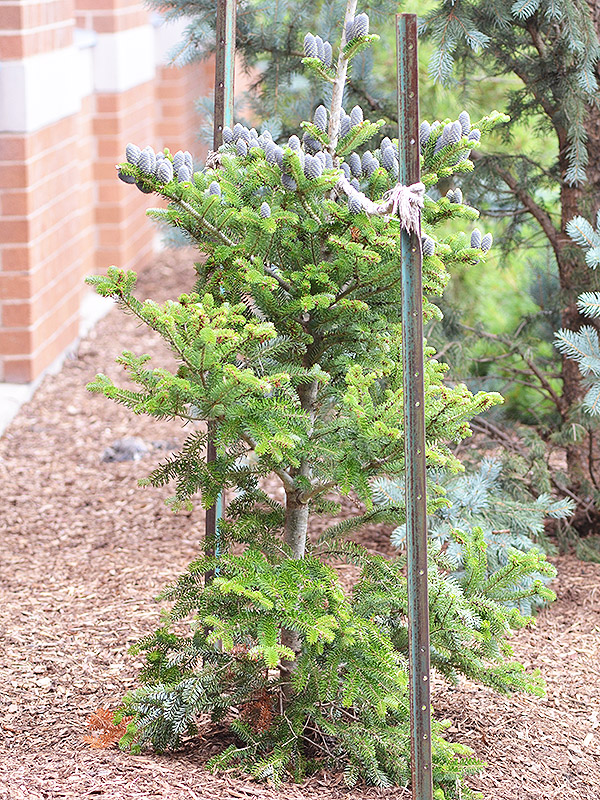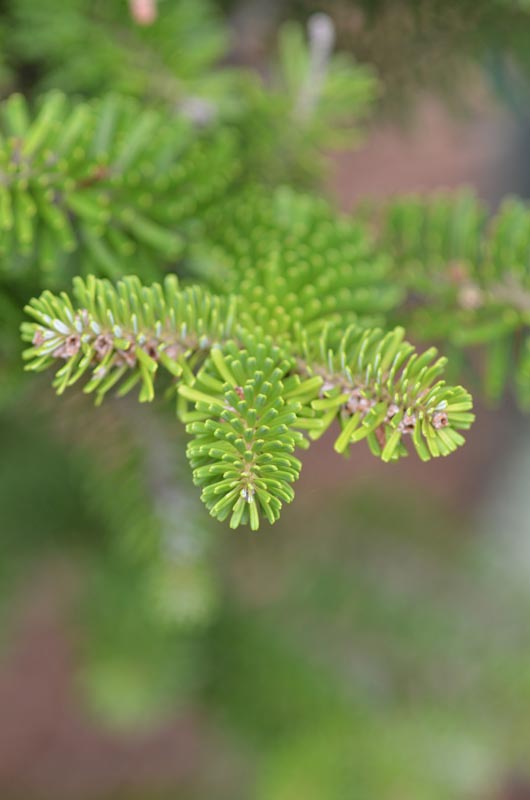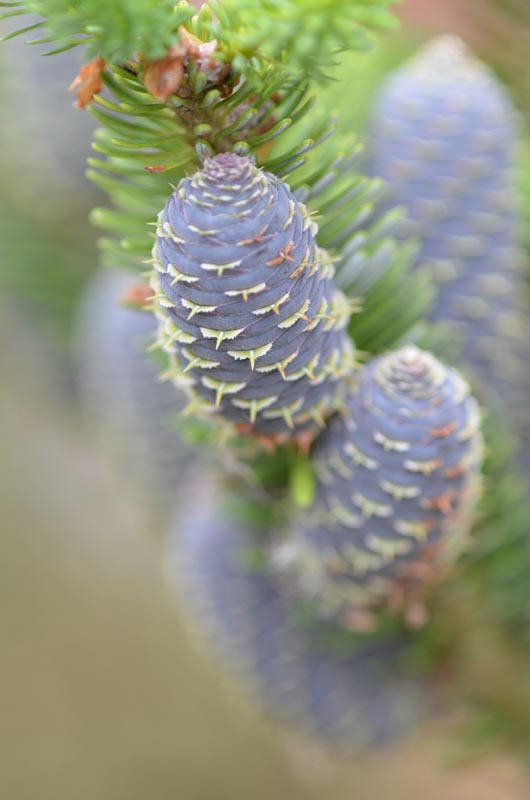
Woody > Abies > Abies koreana > Abies koreana 'Aurea'
Abies koreana
'Aurea'
Golden Korean Fir
Mike's
Opinion


"
The Golden Korean Fir is a beautiful plant offering a beautiful golden colour in the spring. After the golden colour on the needles fades, it shows its stunning deep purple cones. This tree is used in many gardens to accent other plants and provide colour diversity. It is soft to the touch and will hold its needles longer than a spruce or pine. This tree may not be the most ideal to plant in certain locations due to its irregular and unpredictable growth pattern while it is young. Over time it will develop into a medium sized pyramidal tree.
Michael Pascoe, NDP., ODH., CLT., MSc. (Plant Conservation)
"
| Family |
| Pinaceae |
| Genus |
| Abies |
| Species |
| koreana |
| Cultivar |
| 'Aurea' |
| Category |
| Woody |
| Type |
| Tree (evergreen) |
| USDA Hardiness Zone |
| 5 - 8 |
| Canadian Hardiness Zone |
| 4a - 8a |
| RHS Hardiness Zone |
| H7 - H4 |
| Temperature (°C) |
| -29 - (-7) |
| Temperature (°F) |
| -20 - 20 |
| Height |
| 3 - 6 m |
| Spread |
| 2 - 4 m |
Photographs
Description and Growing Information
Flowering Period
| General Description |
| A coniferous, medium-sized tree with lemon yellow needles in the spring that gradually fades as the season progresses. It has deep purple coloured cones. This cultivar has an irregular form while young but over time will develop into a medium sized pyramidal tree. |
| Landscape |
| A multi-seasonal specimen plant, used for hedges, windbreak and bonsai. |
| Shape |
| In its youth, it has an irregular form however once it matures, it will take the shape of a medium sized pyramidal tree. |
| Growth |
| Slow |
| ID Characteristic |
| It has short, golden needles with white undersides in the spring that gradually fades during the summer. With its smooth, grey bark, short golden needles in the spring and deep purple cones that face upwards, makes it an easy plant to identify. |
| Pests |
| Can become infected by diplodia blight. The fungus starts at the tip of the branches and eventually spreads throughout the entire tree. Is also susceptible to phomopsis blight. |
| Habitat |
| Horticultural origin. |
| Bark/Stem Description |
| The bark is very smooth to the touch. It has a grey colour once developed, with green or brown present on the new growth. |
| Flower/Leaf Bud Description |
| Small, glabrous buds that are a brownish-red in colour. Scaled, and covered in white resin, they are approximately 6 - 8 mm long and 4 - 5 mm wide. |
| Leaf Description |
| Needle-like, densely and radially arranged on the stem. Flat, thin and soft to the touch with a white underside. A bright lemon-yellow colour on new growth which fades to a more greenish-yellow colour as they mature. |
| Fruit Description |
| It has deep purple cones, turning beige at maturity. It is easily recognizable for the vibrant purple colour. |
| Colour Description |
| It is known for having a vibrant lemon-yellow colour in the spring, as the season progresses the colour fades into a more greenish-yellow. The underside of the needles is a whitish-grey. The cones are what makes this such a wonderful specimen tree to have in a garden as they get a vibrant deep purple colour. The bark is a grey coloured. |
| Texture Description |
| Medium. |
| Notable Specimens |
| The Gardens of Fanshawe College, London, Ontario. Canada. |
| Ethnobotanical Uses (Disclaimer) |
| Specimen plant. |


